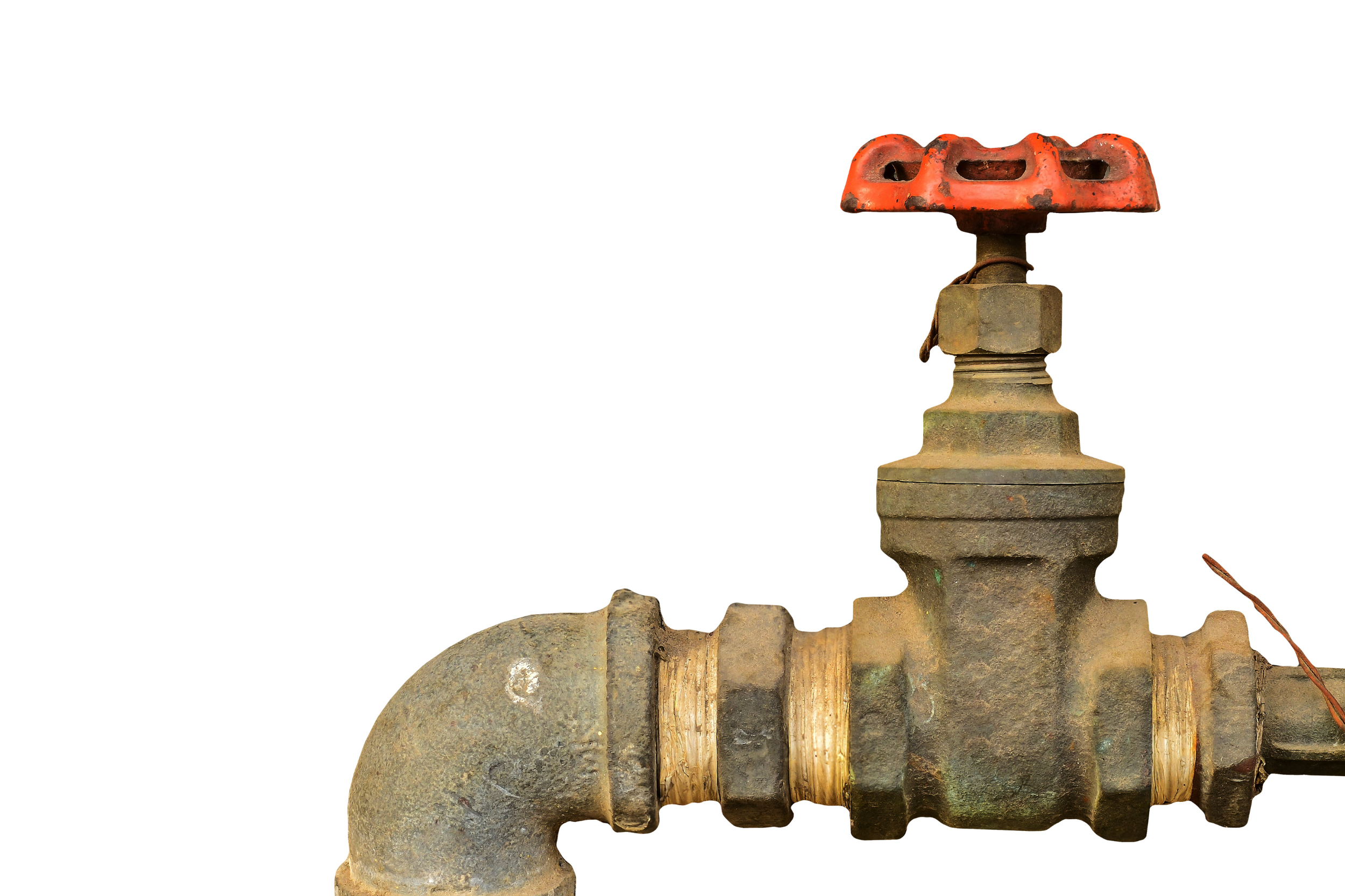Home Water Supply: Shut-off Essentials
A quick how-to on turning off your home’s water supply in the event of a leak.
In Florida, as in many regions of the U.S., being prepared for emergencies is key. Hurricanes, heavy rains, and other weather events can often lead to sudden and unexpected damage to your home. One common cause of residential damage is water leaks or bursts, which can quickly escalate and cause significant harm. It's for this reason every homeowner should know how to locate and turn off the water supply in their home. Knowing how to control your home's water supply could be the difference between a minor inconvenience and a costly repair.
Knowing Your Water System: The Lifeline of Your Home
Before diving into the details, it's essential to familiarize yourself with your home's water system, focusing on key points of control. In Florida, and in most residential properties, you will typically encounter two primary water shut-off points: the street-side cut-off and the water main shut-off valve. Beyond these, you'll also find various interior shut-off valves throughout your home, at locations like under sinks, behind toilets, and near appliances such as washing machines and water heaters. Together, these valves give you the power to control the flow of water throughout your house, and knowing their locations can be instrumental in preventing or managing water damage in an emergency.
Understanding this system not only empowers you to control the flow of water throughout your house, but it can also help in determining the location of a potential leak. For instance, if water continues to flow after you've shut off an interior valve, the leak may be between that valve and the main shut-off. Conversely, if shutting off the main valve stops the leak, you'll know the issue is somewhere within your house. Being knowledgeable about these locations and how they function within your home's water system can be instrumental in preventing or managing water damage in an emergency.
The Street-Side Cut-off: Your First Line of Defense
The first point of entry for water into your property is the street-side cut-off. This valve is typically located close to the street, often near the curb in a concrete box usually marked "water" or "H2O." It's important to know this location, as it can be used to completely shut off all water supply to your property, ideal in the case of major leaks or if the other valves are inaccessible or not working. This valve typically requires a meter key or wrench to turn. To shut off the water, turn the valve clockwise until it stops. Remember, always check with your local water company before operating this valve.
Please note: This shut-off is typically operated by the water company, and in some municipalities, homeowners may be prohibited from accessing it without permission. Always check with your local water company regarding regulations.
The Well Water Variant: A Special Consideration
For homes that utilize well water, the shut-off process can differ slightly. Unlike municipal water supply systems, well water systems often depend on electricity to pump water into the home. Therefore, in many cases, turning off the electrical circuit that powers your well pump effectively shuts off your water supply. This electrical box is usually located near the well pump system or in your home's main electrical panel.
There should also be a shut-off valve located on the pipe that runs from the well pump to your home. This valve works similarly to the exterior cut-off mentioned above. Shutting off this valve will stop the flow of water from the well into your home without affecting the well pump.
Remember, well systems can be complex and may vary significantly from home to home. It's always recommended to familiarize yourself with your specific system and consult a professional if you're unsure. As with homes using municipal water supplies, understanding and effectively operating your well water shut-off system can help prevent water damage, conserve resources, and provide crucial control over your home's water supply.
The Water Main Shut-off Valve: Your Essential Water Gatekeeper
The next critical location to understand is the water main shut-off valve, which may not always be located on the exterior of your home. Typically, this valve is in line with the street-side supply, often running along the exterior wall of your house. That being said, don't be surprised if you find it in other locations based on the specifics of your home's construction and design.
You can often find the water main shut-off valve where the water line enters your home, which could be inside an insulated box to protect it from Florida's heat. In some homes, it could be located inside a garage, basement, utility room or near the home’s water heater. Regardless of its location, this valve allows you to turn off the water supply to the entire house without affecting the street-side supply. This valve is usually a round wheel or a lever. Turn the round wheel clockwise or the lever perpendicular to the pipe to shut off the water.
Knowing the whereabouts of this valve is incredibly beneficial, particularly if you detect a leak within your home but still need water for your garden or sprinkler system. Understanding the specifics of your home's layout can help you locate this essential water control point quickly and efficiently during a water emergency.
Interior shut-offs: Targeted Control
Beyond the primary shut-off points at the street-side and the water main, your home's water system includes a series of interior shut-off valves. These valves are strategically located at various points throughout your house, giving you the ability to control water supply to specific areas and appliances.
These valves are typically small round wheels or levers located on pipes leading to your fixtures. To close them, turn the round wheel clockwise or the lever so that it's perpendicular to the pipe. In all cases, it's a good idea to turn these valves gently to avoid causing damage. If they're stuck, don't force them. Instead, call a professional plumber for assistance.
You can typically find these valves:
Under Sinks: Usually, there is a pair of valves—one for hot water and one for cold. Turning these valves clockwise will stop the water flow to the sink.
Behind Toilets: You'll often find a single valve near the base of the toilet, usually on the wall or floor. Turning this valve will shut off the water supply to the toilet.
Near Water-Using Appliances: Appliances like washing machines and dishwashers often have a dedicated shut-off valve. You might find it on the wall behind the appliance or in a box recessed into the wall.
Near Water Heaters: Water heaters usually have a shut-off valve on the cold water supply pipe leading into the unit.
Outside Faucets: If your home has outdoor faucets for gardening or other uses, they usually have their own shut-off valves inside the house.
In the Basement or Utility Room: If your home has a basement or utility room, you may find shut-off valves controlling the water flow to the upper floors or specific sections of your home.
However, it's important to note that not all areas of your home may have dedicated shut-off valves. For instance, shower or bathtub plumbing often lacks accessible interior shut-off valves. Similarly, older homes might not have as many interior valves as newer constructions. In such cases, you would need to use the water main shut-off valve to control the water supply.
Knowing the location of these interior shut-off valves allows for quick response to leaks or bursts, preventing further damage and allowing for easier repair. So, invest the time to locate and understand these valves in your home—it's knowledge that could save you significant stress and repair costs in the future.
Why It Matters
Knowing how to control your home's water supply is more than just a handy skill. It's a crucial aspect of home maintenance that can help prevent water damage, conserve water, and even save you money on your water bill. In an emergency situation, being able to quickly shut off your water can prevent a minor issue from becoming a major disaster.
Additionally, regularly checking these valves and turning them off and on can prevent them from getting stuck over time. This can be especially important in older homes where the plumbing systems may not have been used or maintained regularly.
Stay Prepared
As public adjusters, we see first-hand the damage that unexpected water leaks can cause. It's our mission to help you mitigate such risks and ensure that you're fully prepared to protect your home. Remember, prevention is always better than cure. So take the time today to locate your water cut-off points and familiarize yourself with how to operate them. Your home, your wallet, and your peace of mind will thank you.



